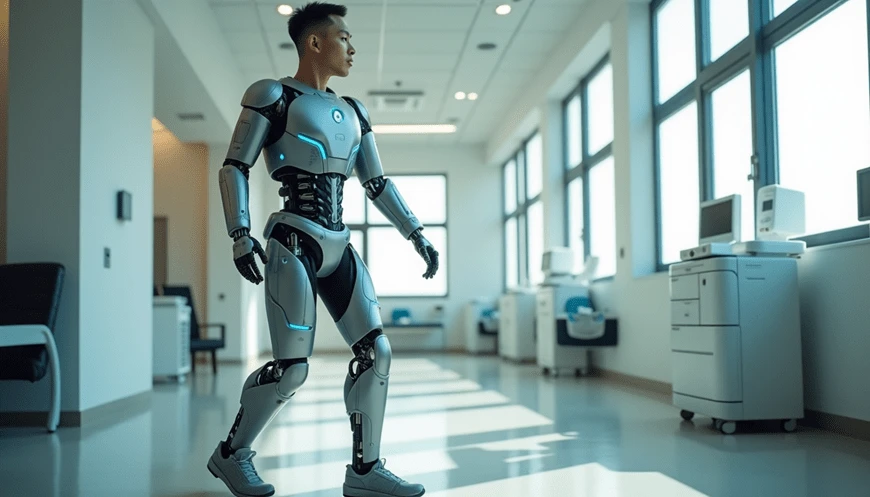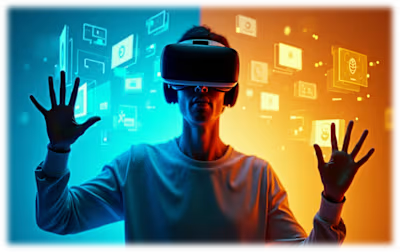South Korean 'Iron Man' Suit in Real Life Helps Paraplegics Walk

Marvel movies showed us what seemed like pure science fiction, but now it's reality. South Korean engineers have built an Iron Man suit that's changing lives. The suit helps people with paraplegia walk again instead of fighting villains. Many teams have tried to create powered exoskeletons, but this breakthrough from the KAIST research team stands out because of its remarkable capabilities and real-life applications.
Our team picked up on this trip to build an Iron Man suit, and this South Korean breakthrough represents the most significant advancement.
The suit is a combination of cutting-edge sensor technology, artificial Intelligence, and light materials to create a wearable solution. This breakthrough transforms mobility aid technology and gives the hope of millions around the world suffering from paralysis.
Breakthrough Technology Features
This Iron Man suit's technological features in real life show impressive results. The WalkON Suit F1 brings a breakthrough in exoskeleton technology that combines advanced sensors with sophisticated AI control systems.
Advanced Sensor Integration and AI Control
The suit's Intelligence stems from its detailed sensor network that processes a remarkable 1,000 signals per second to keep perfect balance and predict user movements. Front-mounted lenses act as the suit's "eyes" to analyze surroundings and spot obstacles. These features help users overcome their sensory limitations.
Lightweight Design and Construction Materials
Engineers focused on practical usability while designing this real-life Iron Man suit. A sophisticated blend of aluminum and titanium makes up the exoskeleton that weighs 50 kg (110 lb). Twelve electronic motors work together smoothly to mimic natural joint movements.
Mobility Capabilities and Speed Performance
Testing revealed some remarkable mobility features.
The suit helps users to:
· Walk at speeds of 3.2 kph (2 mph)
· Direct themselves up and down stairs
· Move sideways to sit down
· Stay balanced during complex movements
The system stands out because it can approach users in their wheelchairs and help them stand up on their own - a revolutionary feature for daily use. Advanced sensors in the soles and upper body give precise movement control. This Iron Man suit proves itself as both a technological marvel and a practical mobility solution.
Real-World Applications
Research shows how this Iron Man suit makes a real difference in people's daily lives. The results look promising for people of all backgrounds.
Daily Life Integration Scenarios
People can smoothly combine the exoskeleton with their everyday activities. The device helps you perform basic tasks on your own, and users report walking up to a quarter mile in one session.
The system works well in different settings and lets users move around:
· Carpeted areas and public spaces
· ADA-compliant ramps and doorways
· Various ground surfaces and inclines
Medical Rehabilitation Benefits
Medical advantages go beyond just movement. Users see improvements in their bowel and bladder function, less leg spasming, and better control of bodily functions. Regular physical therapy has become more manageable with the system, and some paralyzed users have achieved over 500,000 steps. Regular use maintains bone density and muscle mass, which are vital factors for long-term health.
Success Stories and User Experiences
Many success stories show how this technology changes lives. A veteran who was paralyzed for 27 years learned to balance again and moved independently. One user compared it to "riding the robot" and said their brain saw the movement as natural walking despite complete paralysis. The technology has helped create memorable moments, like when a user stood during their wedding ceremony.
Development Journey
The story of creating this Iron Man suit shows how dedication and state-of-the-art technology can transform science fiction into ground technology. This development demonstrates determination at work.
KAIST Research Team Background
Professor Kyoungchul Kong's team at KAIST has worked on trailblazing solutions since 2015. Their steadfast dedication to mobility solutions resulted in multiple versions, and each version brought the most essential improvements. The team's first success came in 2016 with WalkON Suit 1. Later, in 2020, WalkON Suit 4 achieved walking speeds matching non-disabled individuals.
Iron Man Inspiration to Reality
Popular culture has shaped this technology's Marvel in significant ways. Team member Park Jeong-su candidly admits that the Marvel superhero Iron Man inspired their vision. The inspiration for the suit led to ground innovations, specifically when the suit walked around independently and was able to maintain balance against the forces of gravity.
Technical Challenges Overcome
The team conquered several significant hurdles:
· Component Development: Through collaboration with Angel Robotics, the team produced all core components domestically, including motors, reducers, and primary circuits.
· Performance Enhancement: The team improved motor and reducer module output density by approximately two-fold based on the power-per-weight ratio. The motor driver's control performance increased three-fold compared to existing technologies.
The team's achievement stands out because they solved the biggest problem that affected all previous wearable robots - needing assistance while putting them on. Their innovative frontal-docking method removed this dependency, marking a breakthrough in exoskeleton technology.
Future Impact and Accessibility
The Iron Man suit's future in real life shows remarkable changes in its market reach and accessibility. Healthcare policy updates and new technology adoption have altered the map of how these devices reach people who need them most.
Cost and Market Availability
Medicare coverage for exoskeletons started in January 2024, which revolutionizes how people can access these devices. The coverage now takes care of 80% of the USD 91,000 price tag. This change is a vital step forward because earlier, only veterans or wealthy individuals could afford these expensive devices. The global market will grow from USD 1.24 billion in 2023 to USD 14.67 billion by 2030.
Healthcare System Integration
Healthcare systems show better integration today, though some hurdles still exist. Right now, 2.5 billion people globally need assistive products, and experts expect this number to reach 3.5 billion by 2050.
The integration faces these challenges:
· Healthcare facilities must make significant upfront investments
· Teams need specialized training and maintenance skills
· Each patient needs custom adjustments to their device
Global Adoption Potential
The gap in global accessibility is striking - only 3% of people in low-income countries can get needed assistive technology, while 90% in high-income countries have access. Asia Pacific leads the market growth with an impressive CAGR of 24.5%. Commercial insurance companies might follow Medicare's example, which could help many more people get this technology.
Conclusion
South Korean engineers have turned science fiction into reality with their groundbreaking exoskeleton technology. This achievement goes beyond technical innovation and reshapes how we help people with paralysis move. Advanced AI systems process 1,000 signals per second and work naturally with sophisticated sensors to create movement patterns that change lives.
Success stories from the ground prove this technology's value. People who use it can now handle daily activities on their own, walk long distances, and take part in life's meaningful moments. Medicare's decision to cover 80% of the costs has made this technology available to more people in need.
The market outlook brings hope. Growth estimates show an increase from $1.24 billion to $14.67 billion by 2030. Healthcare systems have started to adopt this technology, which points to wider use across regions and income levels. We face challenges in low-income countries, but new developments in cost reduction and availability show promise for worldwide use.
Science fiction influenced this route, but the human spirit and determination made it happen. These exoskeletons powered by electricity demonstrate how technology can improve human capabilities and give freedom to those who require it the most.
FAQs
Q1. What's the way in which you think the South Korean 'Iron Man' suit functions?
It uses sophisticated sensors as well as AI that process up to 1,000 messages per second, which allows natural balance and movement. It comes with front-mounted lenses that examine the surroundings and 12 electronic motors that mimic joint movements, enabling users to walk or climb stairs and do a variety of mobility tasks.
Q2. What are the main benefits of using this exoskeleton?
Users can walk independently at speeds up to 3.2 kph, navigate stairs, and perform daily activities. The suit also provides medical benefits such as improved bowel and bladder function and reduced leg spasms, as well as helps maintain bone density and muscle mass through regular use.
Q3. How much does the exoskeleton cost, and is it covered by insurance?
The exoskeleton costs approximately $91,000. As of January 2024, Medicare covers about 80% of the cost, making it more accessible to those who need it. Commercial insurers are also considering coverage following Medicare's lead.
Q4. Who developed this technology, and what inspired it?
The exoskeleton was developed by Professor Kyoungchul Kong's team at KAIST in South Korea. They've been working on this technology since 2015, with the Marvel superhero Iron Man serving as inspiration for their vision of creating a real-life mobility assistance suit.
Q5. What is the future outlook for this technology?
The global market for exoskeletons is projected to grow from $1.24 billion in 2023 to $14.67 billion by 2030. While adoption is currently higher in high-income countries, efforts are being made to increase accessibility worldwide, particularly in regions like the Asia Pacific, where the market is growing rapidly.
Like this project
Posted Jan 7, 2025
KAIST's exoskeleton, inspired by Iron Man, uses AI and sensors to help paraplegics walk, offering mobility, medical benefits, and a hopeful future.
Likes
0
Views
17



